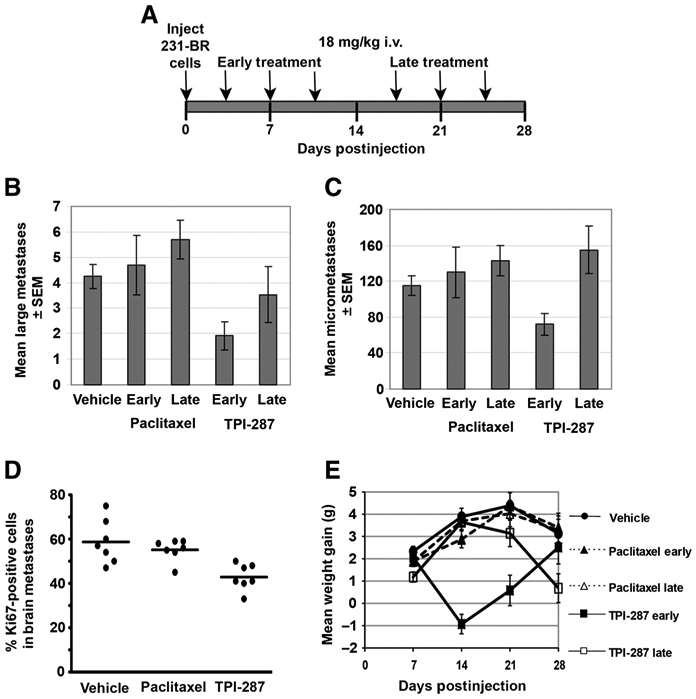Figure 5.

TPI-287, but not paclitaxel, prevented the formation of large 231-BR brain metastases. A, experimental schema in which mice were inoculated with 231-BR tumor cells in the left cardiac ventricle. Mice were randomized to receive an every 4 days ×3 schedule of 18 mg/kg paclitaxel or TPI-287, delivered either early (days 3, 7, and 11 postinoculation) or late (days 18, 22, and 26 postinoculation). B, number of large brain metastases (>300 μmol/L) in mice 28 days postinoculation of 231-BR cells following the treatments described in A. C, number of brain micrometastases (<300 μmol/L) in mice 28 days postinoculation of 231-BR cells. n = 17 for vehicle, n = 13 for TPI-287 early, n = 9 for TPI-287 late, n = 8 for paclitaxel early, and n = 7 for paclitaxel late for the results in B and C. D, immunoflourescence for Ki67 was used to determine proliferation rate in brain metastases on day 28, 48 hours after the final treatment with paclitaxel (late schedule) or TPI-287 (late schedule). Each dot represents the percentage of Ki67-positive 231-BR cells counted in a mouse brain, P = 0.0002 in a comparison of TPI-287 and vehicle-treated groups. E, mean (±SEM) animal weight differences from baseline (day 0) through the experiment described in A.
